Apple Tree Release
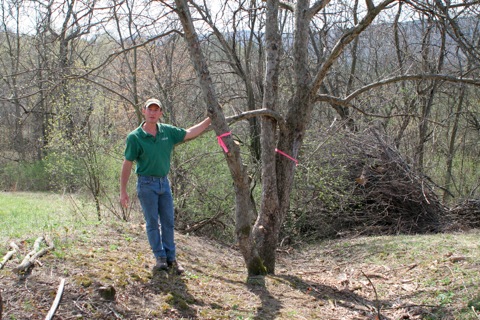
apple tree released fall of 2005
In five years I have removed all the brush and small trees growing around and shading apples trees that where once part of a commercial orchard. It has been over 60 years since the orchard was tended. Due to the removal of competing growth the apple trees have been able to start producing a greater amount of fruit or have started producing again.
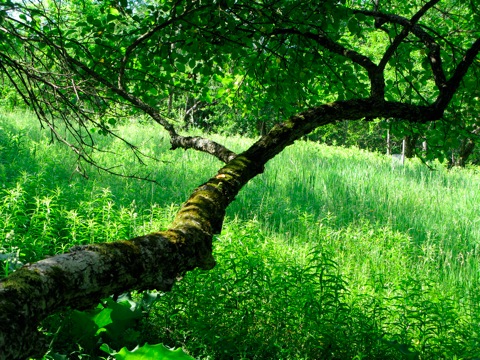
branch of an old apple tree
I believe that the older an apple tree is the more beautiful they become. With age comes more character, frequently manifested in horizontal branching like the tree in the picture above. This tree is my favorite due to it’s branching and the fact that I have been working with her for five years. When I first found this tree the whole canopy was completely covered with grape vines.
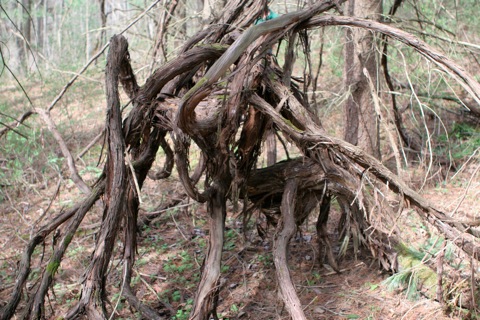
vigorous grape vine
These grape vines where just doing what grape vines do, using a tree in their search for sunlight. The trunk of this vine was about 10 inches across and I cut it off at the soil level and again as high up as I could reach. I didn’t pull the vines out of the tree since this would have damaged the tree. After three years all of the grape vines had disintegrated and fallen out of the tree. In 2009 this old beauty produced a nice crop of apples.
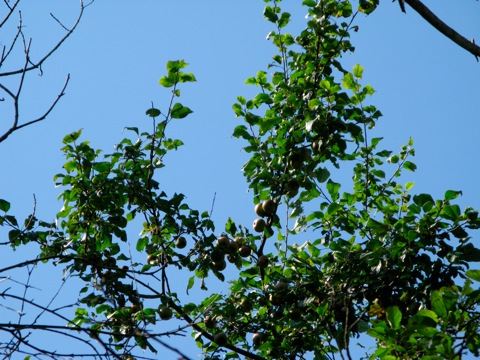
apples on released tree
By removing the competition of other trees around apples the released trees will be able to grow better, start flowering and begin bearing fruit. The apple tree above is now producing fruit after I removed the small trees around it and girdled the larger ones.
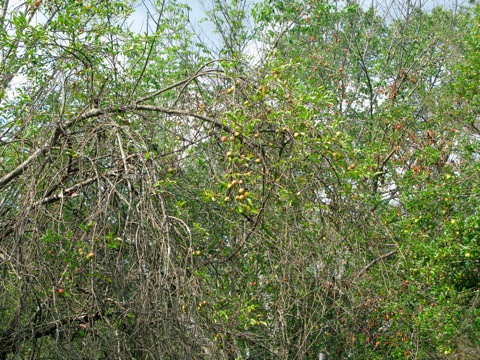
apples on released tree
The above apple tree is in its second year of have all the grape vines removed from it. It has been two years since I took this picture and the tree is doing well. I’m quite sure that this tree would have died very shortly if I hadn’t started to take care of it.
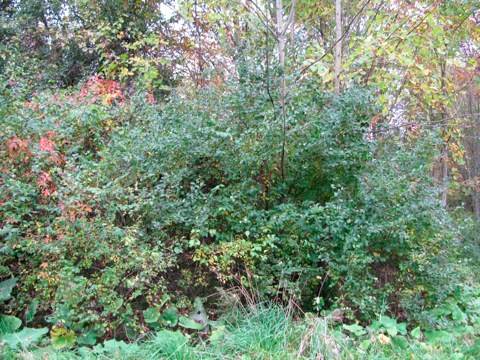
before releasing apple trees
This is an area that I started to work in during the fall of 2008. It is hard to find the apple trees that are present. Most of what you see is honeysuckle but I also removed several ash trees.
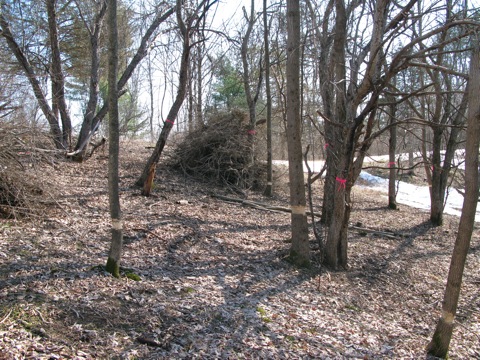
after trees have been released
This is the same area in March of 2009.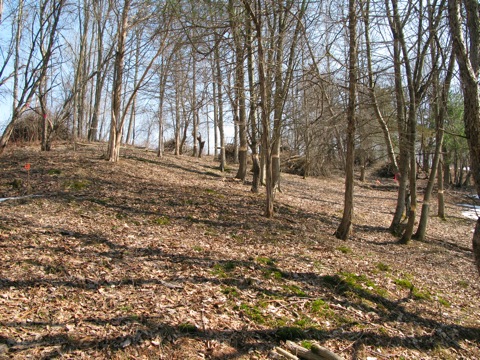
all invasives are removed
After all the honeysuckle, European buckthorn, multiflora rose and Japanese barberry are removed the landscape is greatly changed. It’s exciting to see how well the apples start to preform.
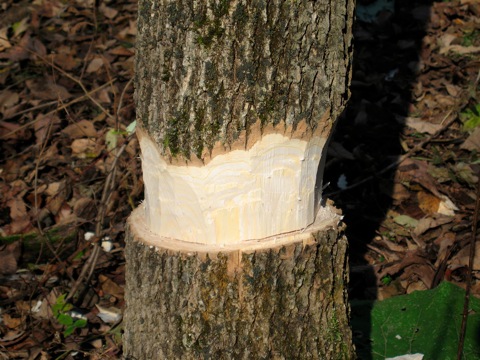
girdling technique
All the trees that are shading apples that are too big for me to cut down with my hand saw are girdled. I make a cut all the way around the tree into the bark well beyond the cambium layer and then use a hand axe to cut down from the top. This separates the tissue so the movement of nutrients are interrupted and cause the tree to die. Released apple trees have grown with other trees around them and will have grown towards light instead of growing for proper tree balance. These trees will frequently be leaning heavily in one direction and are in danger of being blown down during high winds. Since it’s the larger trees that have been protecting the released apples from high winds killing them by girdling and not cutting them down gives the apple trees time to grow and create a tree more balance that can withstand high winds. Over time these large girdled trees will fall to the ground but before that they will give homes to cavity nesting birds and these snags offer hunting perches for raptors.
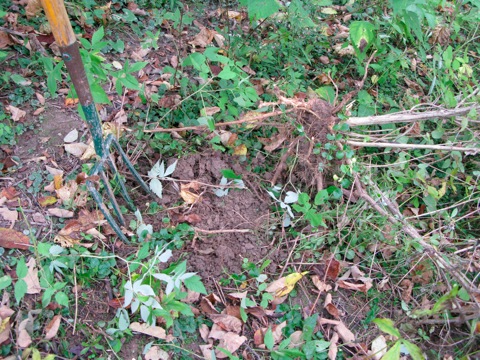
honeysuckle removed with garden fork
All the smaller invasive plants are removed by hand pulling or by using a garden fork. Larger plants are sawn off at the soil level and for the next two years I snap off the regrowth, if it appears, by hand. I have found this to work very well in controlling buckthorn and honeysuckle but harder with multiflora rose and barberry.
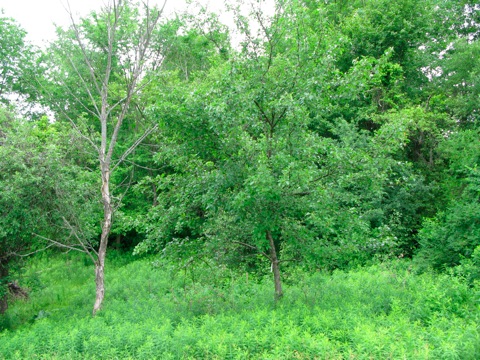
girdled elm left, release apple right
Here is an apple that I released from surrounding brush and trees in 2005. The elm on the left died the second year after being girdled.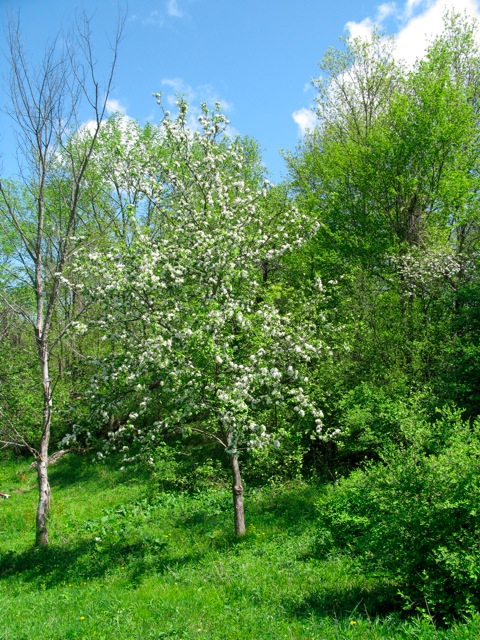
released apple flowering
Here is the same apple tree seen in the above photo flowering spring of 2009. The apples are not very attractive or tasty to humans but offer up fruit that is greatly enjoyed by a host of wildlife.
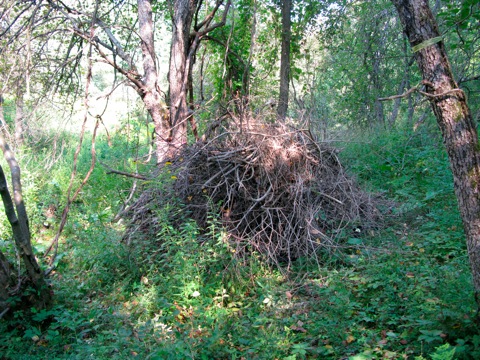
brush pile
With all the small trees that I’m cutting down and the invasive shrubs that I’m removing I have created many brush piles. I do not burn any of the brush but make piles in all the areas that I’m work in. These piles create a great habitat for wildlife and in time this organic material goes on to enrich the soil. I have found fawns hidden in brush piles, snakes sunning themselves and trails of rodents going back and forth. Over the past 5 years I have become a great advocate of brush piles and believe that they offer many benefits to the environment.
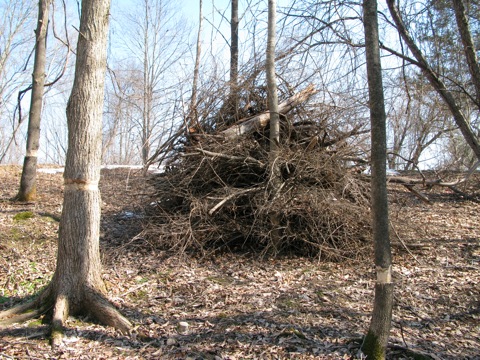
brush pile
Over time I have found that I can make denser piles of brush by piling them up against a tree that I have girdled and using that tree to support myself as I climb up the pile and jump up and down on it to compact it before adding more brush. I also use large logs to weight down the brush. I make the brush pile horizontal with the topography and put some brush on the down hill side that isn’t compacted so that wildlife can access the protection of the pile easier.
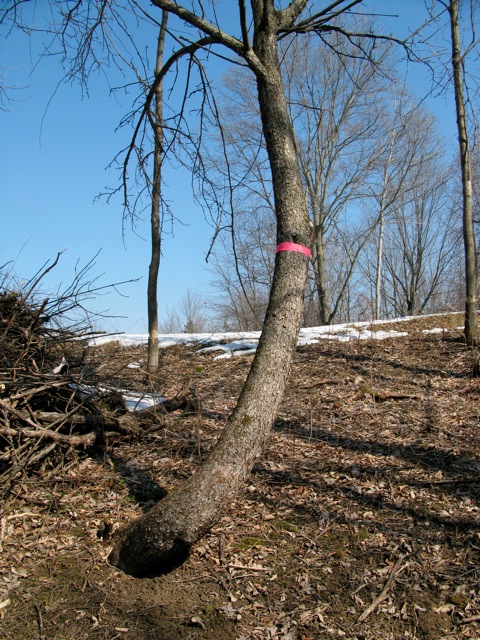
released apple tree
Here is a very healthy apple tree that had immense honeysuckles around it before it was released. Since it had a hard time reaching for the light its growth wasn’t very straight. I’m glad that I have some young trees like this one to work with since some of the older apples might not be around much longer. This tree is most likely a seedling of one of the apples planted on this property over a hundred years ago.

herbaceous growth
The next season after releasing apple trees there is an explosion of growth due to the light reaching the forest floor. 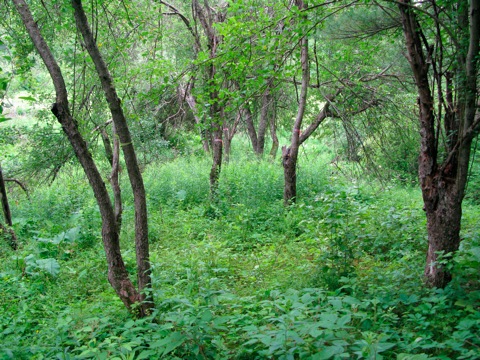
herbaceous and shrub regrowth
Blackberries, raspberries and dewberries quickly take advantage of the post apple tree release setting.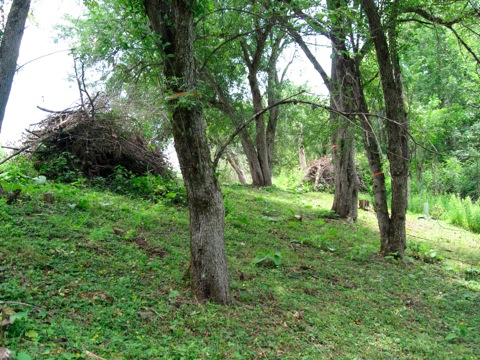
herbaceous growth after trimming
So that the apples can have as much benefit from being released I used a weed eater to cut back the growth below the apples out to the drip line. Cutting back this growth will allow more water and nutrients to become available to the apple trees.
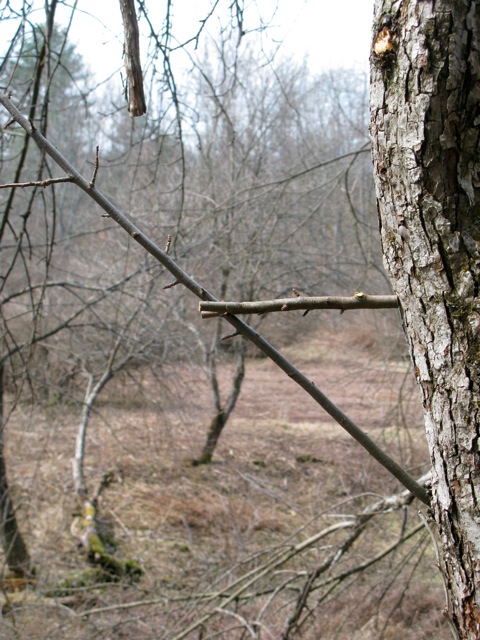
training sucker growth
As I have been working around the apple trees I have been thinning and pruning some of the sucker growth that has appeared on the trunks of the trees. I have been training some of these suckers so that they grow more horizontally so that they will have a better crotch structure and less likely to be weak. I fashion a pruned off branch to make the support needed to angle the sucker away from the trunk. I just started doing this in 2009 and have yet to find out if it will be successful.
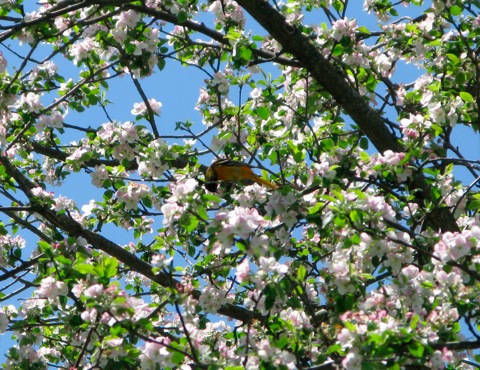
Baltimore Oriole at apple blossoms
I don’t know if the Baltimore Oriole is drawn to the apple blossoms due to the presence of nectar or insects that are drawn to the blooms. 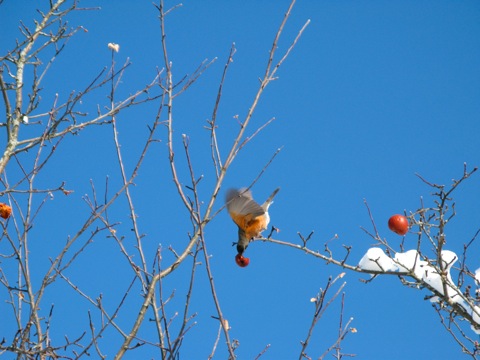
robin visiting apples in February
Several game species benefit from the increase of apple production such as deer, bear, turkey, grouse, rabbit as well as many non game species including robins.